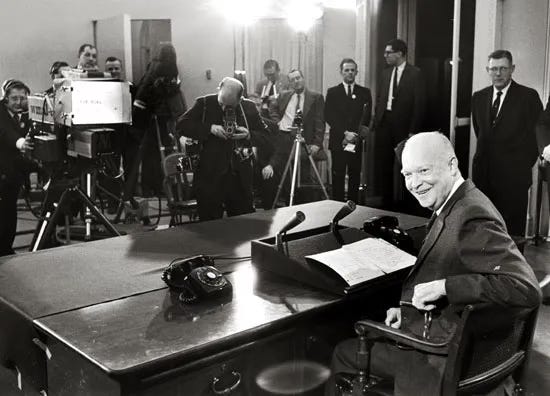Military industrial complex in the age of AI
Eisenhower for the 21st century
We are hosting a community huddle in Delhi on July 9. Apply to attend.
The application season is around the corner. If you need 1:1 mentorship to pursue your goal with a clear strategy, apply for our 1:1 mentorship cohort.
Today’s newsletter is by our VP of Product and Government Affairs, Varya Srivastava. Before you dive into military industrial complex and AI, here is a podcast recommendation from us —
The World in 2024 with NYU Professor Dr. Maha Hosain Aziz
In this podcast we cover -
Key geo-political trends in 2024 to look out for
The repercussions of diminishing US leadership and rising new non-state actors
Frameworks for thinking about optimism, technology and a new social contract.
Eisenhower first used the term ‘military-industrial complex’ in the 1960s to describe the mutually symbiotic relationship between the defence technology manufacturers and the government that emerged in the context of an aggressive American foreign policy and the volatile geopolitics of the 20th century. This was built on unfair market conditions that favoured a few private players and strong state control that operated in a black box with limited accountability and oversight.
Since then a lot has changed.
Narratives of unipolar Western hegemony and the ‘end of history’ have given way to a multipolar reality. Our social contract with our own states (i.e. national governments) is changing with the rise of Big Tech companies. The nature of war and our battlefields is expanding from ‘hot’ physical conflicts to ‘cold’ invisible technological attacks and existential risks. This point of inflection is altering our understanding of security and power, and providing us with a unique opportunity to rethink our views on the military-industrial complex in the age of Artificial Intelligence (AI).
Defence and innovation
Our earliest impressions of AI come from either science fiction books or decryption technology built during World War II. While science fiction serves more as an inspiration rather than tangible action; the work on decryption technology forms the basis on which our modern AI systems exist. The early suspects for driving innovation in this decryption technology have been Alan Turning, Marvin Minsky, and John McCathy—Minsky served in the US Navy, McCathy served in the US Army, and Turning had most of his research regulated by the British government and defence.


